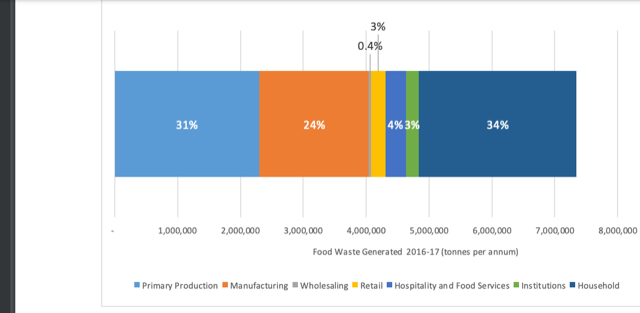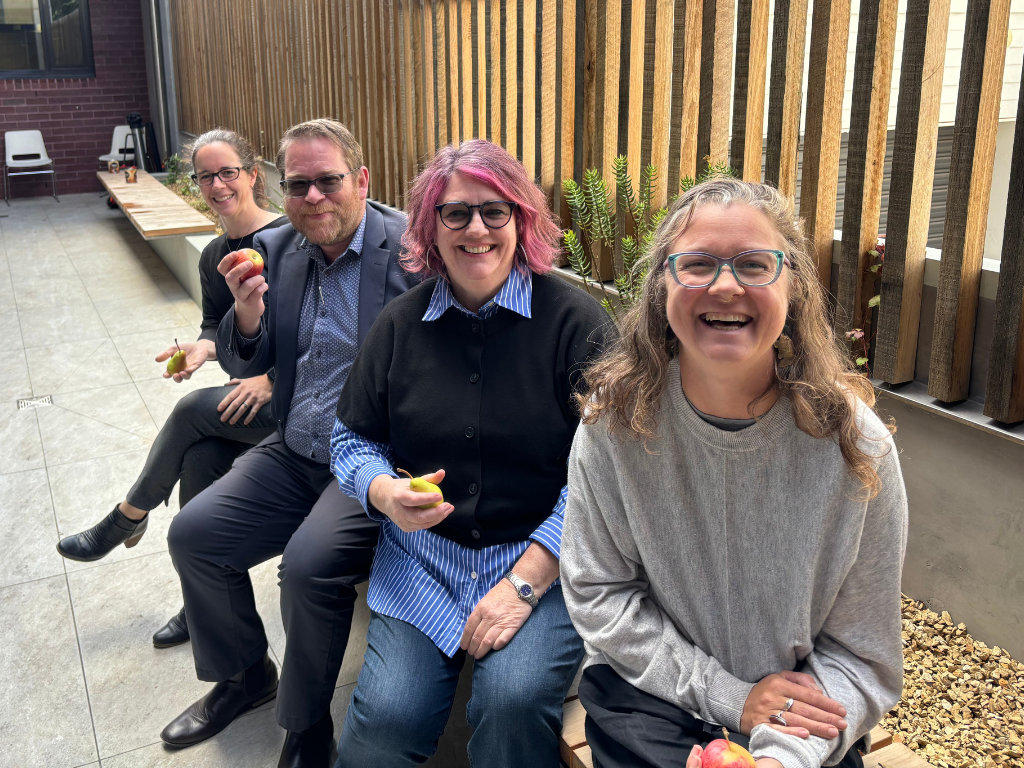Imagine buying five bags of groceries and then throwing one in the bin as you leave the supermarket?
That’s what Australians do every week when they waste about 20 per cent of the food they buy but don’t eat. The food that’s scraped off plates and into the bin, fruit that rots in the bowl, vegetables that go limp in the fridge, canned goods at the back of the pantry that ultimately get tossed.
Conversely, a recent UTAS report shows almost one-in-five Tasmanians don’t have enough to eat.
Food waste, whether it be food that never leaves the farm, food that is lost during transport, or food that is wasted from the hospitality sector and households, has significant economic and environmental impacts:
The Federal Government Department of Agriculture, Water and the Environment says:
- One third of the world’s food is wasted
- 25% of water used in agriculture is used to grow food that is ultimately wasted
- Food waste accounts for eight per cent of global greenhouse emissions. If food waste was a country, it would be the world’s third largest greenhouse emitter behind the USA and China.
- Food waste costs the Australian economy around $20 billion annually
- Each year we waste around 7.3 million tonnes of food; this equates to about 300kg per person or one-in-five bags of groceries
- Food waste accounts for five per cent of Australia’s greenhouse emissions
It takes 25 years for a head of lettuce to decompose in landfill, and rotting food produces methane; 28 times stronger than carbon dioxide.
The National Food Waste Baseline Study in 2019 shows household waste (34%), primary producers (31%) and manufacturing (24%) are the largest contributors to waste. The graph below shows the impact of these sectors, together with retail/hospitality and institutions such as prisons, hospitals and nursing homes.

The breakdown of food waste by type from the National Food Waste Baseline study.
Unsurprisingly, the largest contributors to household waste are fruit and vegetables, bread and leftovers.
Each year, Loaves and Fishes rescues about million kilograms of food that is excess, nearing its best-before date, destined for landfill, animal feed or left to rot in the paddocks.
Beauty in the eye of the beholder
Loaves and Fishes general manager Aaron Kropf said: “Donated food can be excess to what producers can sell, has been rejected, slightly damaged but perfectly edible, or nearing its best-before date.
“Examples are our friends at Banticks Farms giving us 620 dozen eggs over four weeks, or Nichols Poultry having an excess of product due to an ordering problem that resulted in us getting hundreds of kilos of chicken.”
Loaves and Fishes annually delivers 800,000kg of produce and 200,000 ready-to-eat meals to Tasanians doing it tough.
Turners Beach farmer Marcus Brandsema, who weekly donates perfectly-eating seconds from his harvest of tomatoes, capsicums and eggplant, said the produce goes to Loaves and Fishes because it’s spotted, scarred, too big, too small, the wrong shape or color.
A global commitment to halving food waste
Australia has signed on to the UN’s Sustainable Development Goal 12.3 to halve food waste by 2030.
Loaves and Fishes is committed to reducing food waste through participation in a Tasmanian expert group advising Government on implementing Recommendation 31 of the PESRAC report (Premier’s Economic and Social Recovery Advisory Council).
PESRAC was formed in response to the COVID-19 pandemic. Recommendation 31 addresses food security, proposing that school meals programs be expanded, strengthening local links with local food suppliers, expanding emergency food relief, and adopting a community-based approach to hunger.
Specifically, Loaves and Fishes is expanding and strengthening its community food hub model to assist local agencies to grow and collect food from local growers and retailers. The result will be more food from more places for more people, while reducing food waste.
Read our story on how to reduce food waste at home.
Other sources:
More Stories like this…
Short, sharp swim helps nourish our state
Join us in taking a short, sharp swim to mark the [...]
NSW Christian community serving Tassie’s vulnerable
A group of students and leaders from a rural NSW Christian [...]
Food revolution starts in charity kitchen
A food revolution has started quietly in the kitchen of a [...]





